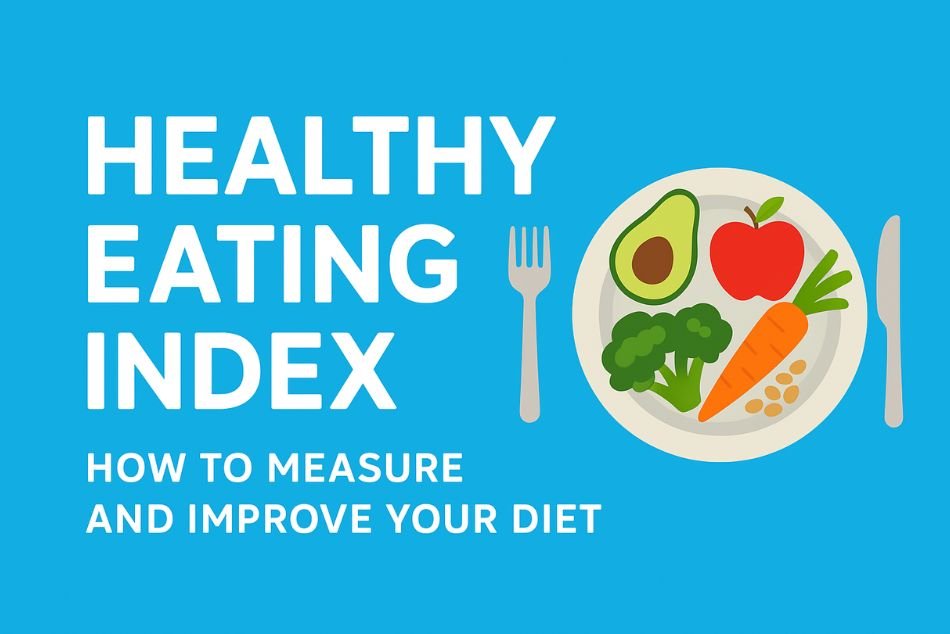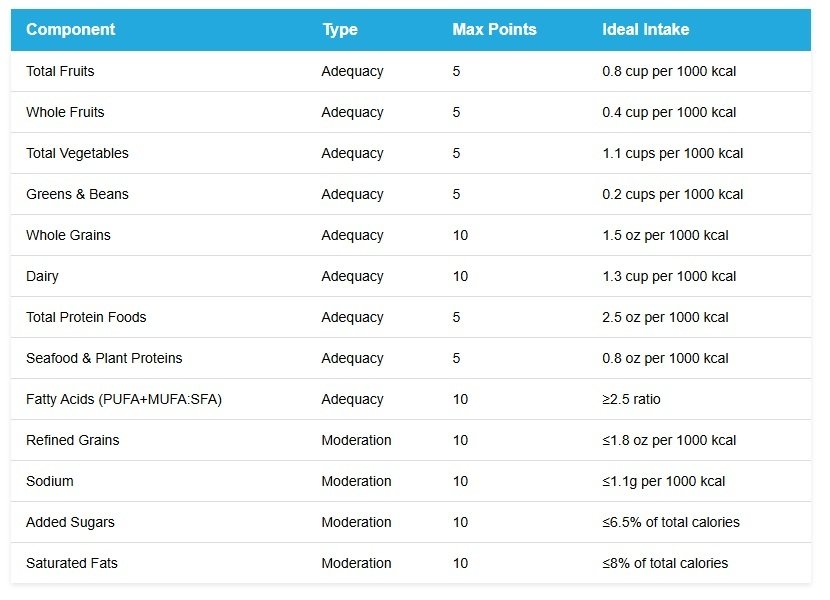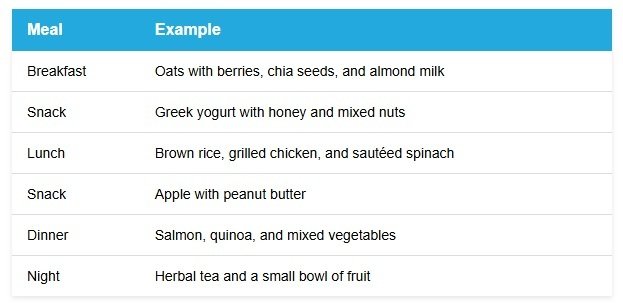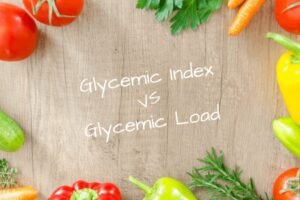What Is the Healthy Eating Index (HEI)?
Ever tracked your macros and still wondered if your diet was truly balanced? You might be hitting your protein goal, staying under calories, and eating clean—but that doesn’t always mean your diet is nutritionally complete. This is where the Healthy Eating Index (HEI) comes in.
The Healthy Eating Index is a scientifically developed tool used to measure the overall quality of your diet. It goes beyond calories and macronutrients, helping you understand how well your food choices align with the recommended dietary guidelines. Originally designed by the U.S. Department of Agriculture (USDA), the HEI evaluates how closely an individual’s or group’s eating pattern matches the key principles of healthy eating.
Think of it as a nutrition report card—where every food you eat contributes to your score. The latest version, HEI-2020, is built on the current Dietary Guidelines for Americans, but its principles apply globally. It looks at your intake of fruits, vegetables, grains, proteins, fats, and added sugars, and assigns a score out of 100. A higher score means your diet is more balanced, diverse, and nutrient-dense.

For anyone serious about fitness, bodybuilding, or long-term health, the Healthy Eating Index offers a powerful way to see if your nutrition supports your physical goals as well as your internal well-being.
Why the Healthy Eating Index Matters for Fitness & Health
Most people in fitness focus on macronutrients—protein for muscle repair, carbs for energy, and fats for hormone balance. But diet quality is more than just numbers. A meal plan high in processed protein bars and refined carbs might fit your macros but still lack the micronutrients and phytonutrients that make you feel and perform your best.
The Healthy Eating Index steps in to measure that deeper level of nutrition. It helps you evaluate the quality of your calories, not just their quantity. Here’s why it matters:
- Better Body Composition: A higher HEI score often means more fiber, antioxidants, and healthy fats—all of which improve digestion, metabolism, and nutrient partitioning.
- Stronger Immunity and Recovery: Diets rich in whole foods, as encouraged by the HEI, supply essential vitamins and minerals for faster recovery and immune support.
- Heart and Metabolic Health: By reducing sodium, added sugar, and saturated fats, you’re protecting long-term cardiovascular and metabolic function.
- Performance and Energy: Athletes or gym enthusiasts who follow HEI-friendly diets tend to experience more stable energy levels and improved training endurance.
So if your goal is to build muscle, lose fat, or simply stay fit as you age, your HEI score can reveal how “clean” your diet truly is—and where you can improve.
Components of the Healthy Eating Index
The Healthy Eating Index is made up of 13 key components divided into two categories: adequacy (foods you should eat more of) and moderation (foods you should limit). Each category has a specific scoring method based on intake per 1,000 calories.
Adequacy Components (More Is Better)
- Total Fruits: All fruit types, including fresh, frozen, or canned.
- Whole Fruits: Focuses specifically on unprocessed, whole fruits.
- Total Vegetables: Includes all vegetables except legumes.
- Greens and Beans: Encourages intake of dark green veggies and legumes.
- Whole Grains: Prioritizes fiber-rich, minimally processed grains.
- Dairy: Includes milk, yogurt, and cheese—preferably low-fat or fat-free.
- Total Protein Foods: Measures total intake from meat, poultry, eggs, nuts, and legumes.
- Seafood and Plant Proteins: Rewards lean and plant-based protein sources.
- Fatty Acids: Evaluates the ratio of unsaturated (good) fats to saturated (bad) fats.
Moderation Components (Less Is Better)
- Refined Grains: Penalty for overconsumption of processed grains.
- Sodium: Encourages moderation to maintain healthy blood pressure.
- Added Sugars: Reducing added sugars improves score and overall health.
- Saturated Fats: Keeps intake of unhealthy fats in check.
Each component receives a score—ranging from 0 to 5, 10, or 20 depending on its category. The total score adds up to a maximum of 100 points.
For example, a person who eats whole grains, fruits, and lean proteins while limiting junk foods will score higher, while someone with a diet heavy in refined carbs and fast food will score lower.
To visualize it:

This framework gives you a clear picture of your nutritional balance—and a roadmap for improvement.
How the Healthy Eating Index Is Calculated
The Healthy Eating Index scoring process may sound complex, but it’s based on simple math and consistency.
Every food group is evaluated per 1,000 calories consumed, which makes it fair whether you eat 1,800 or 3,000 calories daily. Each of the 13 components is assigned points based on how closely your intake matches the recommended range.
For example:
If you eat the suggested amount of vegetables per 1,000 calories, you’ll earn full points for that category.
If you consume more sodium or sugar than recommended, you’ll lose points in moderation categories.
Scores are then totaled to give you an overall HEI score between 0 and 100.
Here’s how to interpret your result:
- 81–100: Excellent diet quality
- 51–80: Fair, needs improvement
- Below 50: Poor diet quality
There are free online HEI calculators where you can log your daily meals or upload your food diary from apps like MyFitnessPal or Cronometer. Within minutes, you can see how balanced your diet really is.
Understanding this score is crucial—because it doesn’t just reflect what you eat, it reflects how well you eat.
How You Can Calculate the Healthy Eating Index (HEI)
The Healthy Eating Index isn’t just a random number. It’s a system designed to measure how well your daily food choices align with official dietary guidelines. Knowing how to calculate it can help you see whether your nutrition truly supports your health and fitness goals.
Step 1: Track What You Eat
Start by writing down everything you eat and drink for a day or two. Include meals, snacks, sauces, drinks, and oils used in cooking. Apps like MyFitnessPal or Cronometer make this process easier, but a simple food log works too.
Step 2: Sort Foods Into HEI Categories
Next, organize what you’ve eaten into the 13 HEI components. They fall under two main types:
- Adequacy Components: Foods you should eat more of, such as fruits, vegetables, whole grains, lean proteins, and healthy fats.
- Moderation Components: Foods you should limit, such as sodium, added sugars, refined grains, and saturated fats.
Step 3: Convert Portions Into Standard Units
To make your results accurate, convert your portions into cup equivalents or ounce equivalents based on standard serving sizes.
For example:
- 1 slice of bread = 1 oz equivalent of grains
- 1 cup of raw spinach = 0.5 cup equivalent of vegetables
- 1 tablespoon of olive oil = 1 serving of healthy fats
Step 4: Apply the HEI Scoring System
Each component has a maximum point value, and your score depends on how closely your intake matches the target. The highest possible HEI score is 100.
Here’s a simplified version of how scoring works:

If your intake meets the target, you get the full points for that category. If it falls short (or exceeds for moderation items), you get proportionally fewer points.
Step 5: Add Up Your Scores
Now, total your points across all 13 components.
- 80–100: Excellent diet quality — your eating habits closely follow healthy standards.
- 51–79: Fair to good — some areas can be improved.
- Below 50: Poor diet quality — you’re far from recommended guidelines.
Step 6: Review and Adjust
Once you know your score, use it as a feedback tool.
- If your vegetable score is low, try adding greens to at least two meals a day.
- If your added sugars score is poor, replace sugary drinks with water or black coffee.
- If your fatty acid ratio is weak, swap butter for olive oil or nuts.
Tracking your Healthy Eating Index regularly (say, once every few weeks) helps you monitor progress and make smarter food choices that match your fitness goals.
Healthy Eating Index Scores by Age, Gender, and Lifestyle
Studies using HEI data show interesting patterns across demographics:
- The average HEI score for American adults usually falls around 59–63, meaning most people’s diets “need improvement.”
- Women tend to score slightly higher than men, largely due to higher fruit and vegetable intake.
- Athletes and fitness enthusiasts often score higher on protein but lower on whole grains or variety.
- Older adults tend to have better HEI scores than younger ones, as their diets usually contain less processed food.
These trends highlight a key point: while your fitness goals may affect calorie and macro targets, the quality of those calories still matters.
For example, a bodybuilder on a 3,000-calorie diet can still have a poor HEI score if those calories come mostly from refined carbs, sodium-heavy sauces, or processed meats. On the other hand, including fruits, vegetables, and healthy fats can boost HEI while still supporting muscle gain.
How to Improve Your Healthy Eating Index Score
Improving your Healthy Eating Index doesn’t mean you need to eat perfectly—it’s about small, sustainable upgrades to your current routine.
Here are practical ways to improve your HEI score while staying aligned with your fitness goals:
1. Eat More Fruits and Vegetables
Add a serving to every meal. Start your day with fruit, load your lunch with greens, and add colorful veggies to dinner. Variety helps improve multiple HEI components at once.
2. Swap Refined Grains for Whole Grains
Replace white rice or bread with brown rice, quinoa, or whole wheat roti. These options are higher in fiber and nutrients and keep you full longer.
3. Include Healthy Fats
Balance your fatty acid ratio by adding foods rich in omega-3 and omega-6 fats—like olive oil, nuts, seeds, and fatty fish. These improve your fatty acid score and heart health.
4. Focus on Lean Protein
Choose grilled chicken, fish, tofu, or beans over fried or processed meats. This increases your “total protein” and “seafood and plant protein” scores.
5. Limit Added Sugars and Sodium
Read labels. Swap sweetened beverages for water or black coffee, and use herbs or spices instead of salt for flavor.
6. Plan Balanced Plates
Use the MyPlate or portion method—half vegetables and fruits, a quarter protein, and a quarter whole grains. This automatically aligns with HEI scoring principles.
7. Sample HEI-Friendly Fitness Meal Plan

These habits gradually increase your HEI score, improve your performance, and enhance recovery—without making your diet feel restrictive.
Common Misconceptions About the Healthy Eating Index
- “It’s only for researchers.” Not true. The HEI is used by nutritionists, athletes, and health-conscious individuals to measure diet quality. You don’t need a lab—just consistent tracking.
- “It ignores macros.” HEI doesn’t replace macros; it complements them. It ensures your macro-focused diet also meets micronutrient and food variety needs.
- “High-protein diets can’t score well.” False. You can easily have a high-protein, high-HEI diet if you get your protein from lean meats, seafood, and plant sources while balancing carbs and fats wisely.
- “It’s too complicated.” HEI might sound technical, but once you understand its 13 components, it becomes intuitive. You can align your grocery list and meal prep with HEI standards effortlessly.
By breaking these misconceptions, you’ll start viewing HEI as a helpful guide—not another rigid diet system.
HEI and Fitness Nutrition: Aligning Science With Your Goals
The Healthy Eating Index fits perfectly into a modern fitness lifestyle because it measures the one thing most diets overlook—quality.
Whether you’re cutting, bulking, or maintaining, a high HEI score supports your goals by ensuring your food sources provide complete nutrition. For example:
- Muscle Recovery: Adequate antioxidants and micronutrients reduce inflammation and support tissue repair.
- Hormonal Balance: Balanced fats and plant-based proteins improve hormonal health for both men and women.
- Gut Health: Fiber from fruits, vegetables, and whole grains boosts digestion and nutrient absorption.
- Long-Term Sustainability: Instead of following strict fads, HEI encourages consistent, flexible eating that adapts to your lifestyle.
In short, the HEI acts as your nutritional GPS—it doesn’t force you down one path but helps you stay on the healthiest possible route.
Key Takeaways
- The Healthy Eating Index (HEI) measures diet quality based on how well you follow established nutritional guidelines.
- A score of 80+ indicates a balanced and nutrient-dense diet, while below 50 shows poor quality.
- Improving your HEI score is about eating more whole foods and fewer processed options.
- It benefits not just your physical appearance but also energy levels, immunity, and long-term wellness.
- Tracking your HEI weekly can help you spot gaps in your nutrition—just like tracking macros helps you hit fitness targets.
If you truly want to optimize your health, recovery, and performance, don’t just focus on calories or protein—aim to raise your Healthy Eating Index score. It’s the smartest, most scientific step toward long-term fitness success.
Final Thoughts
The Healthy Eating Index bridges the gap between what we think is healthy and what science actually defines as healthy. It’s not a diet—it’s a framework to measure and improve the quality of your everyday food choices.
By following HEI principles, you’ll fuel your workouts better, recover faster, and protect your long-term health—all while eating foods you enjoy.
So, next time you plan your meals, don’t just count macros—count the quality too. Because a higher Healthy Eating Index doesn’t just add years to your life; it adds energy, strength, and performance to every single day.
FAQ: Quick Answers About the Healthy Eating Index
Q1) What’s a Good Healthy Eating Index Score?
A score above 80 indicates excellent diet quality.
Q2) Can You Calculate HEI Manually?
Yes. Track your food intake, compare it with recommended intakes, and assign scores per component. But online calculators make it much easier.
Q3) Is HEI Applicable to Indian Diets?
Absolutely. The HEI principles are universal—replace food examples with local equivalents like roti for whole grains or lentils for plant proteins.
Q4) Can Bodybuilders Use HEI?
Yes. It helps ensure your bulking or cutting diet is nutrient-rich, balanced, and sustainable.







